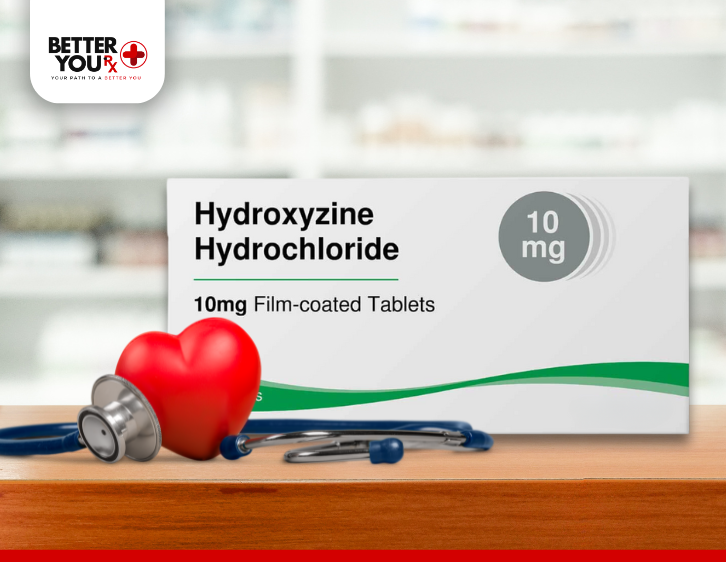What is the Main Cause of Yeast Infection?
Yeast infections, also known as candidiasis, are common but can be bothersome, often leading to uncomfortable symptoms like itching, irritation, and discharge. While yeast infections can occur in both men and women, they are most commonly associated with women and their genital health. If you’ve ever wondered about the main cause of yeast infections and how they develop, you’re not alone. In this article, we will dive deep into the causes of yeast infections, how they manifest, and what you can do to prevent and treat them.
Understanding Yeast Infections
Before identifying the main cause of yeast infections, it’s essential to understand what they are and how they occur. A yeast infection occurs when there is an overgrowth of yeast in a particular part of the body, typically the genital area in women. The most common type of yeast that causes infections is Candida albicans, though other species of Candida can also cause infections.
Candida is a type of fungus that naturally resides in small amounts in areas such as the mouth, throat, intestines, and genital region. Under normal circumstances, the body’s immune system and the balance of other microorganisms in the body help keep Candida in check. However, when this balance is disturbed, Candida can multiply uncontrollably, leading to a yeast infection.
Main Causes of Yeast Infections

The main cause of a yeast infection is an imbalance in the body’s natural ecosystem, leading to an overgrowth of Candida. Several factors can trigger this imbalance, and some individuals may be more susceptible than others. Let’s explore the primary causes and risk factors that contribute to the development of yeast infections.
1. Antibiotic Use
The use of antibiotics is one of the leading causes of yeast infections. Antibiotics work by killing harmful bacteria that cause infections, but they also affect the beneficial bacteria in your body. These good bacteria, such as Lactobacillus, help to maintain a healthy balance in your body, particularly in the vaginal area. When antibiotics kill off these protective bacteria, it creates an environment where yeast can thrive.
This is why yeast infections are often seen after a course of antibiotics, as the body’s microbial balance is temporarily disrupted. While antibiotics are essential for treating bacterial infections, they should be used judiciously to avoid unnecessary side effects like yeast infections.
2. Hormonal Changes
Hormonal changes can also be a significant factor in the development of yeast infections. Hormones such as estrogen play a crucial role in maintaining the balance of microorganisms in the vaginal area. Fluctuations in estrogen levels can make the vaginal environment more conducive to yeast growth. Several scenarios can lead to hormonal imbalances, including:
- Pregnancy: During pregnancy, estrogen levels rise, which can alter the vaginal pH and make it more susceptible to yeast infections.
- Birth control: Hormonal contraceptives, especially those that contain estrogen, can also increase the risk of yeast infections.
- Menopause: As women approach menopause, declining estrogen levels can lead to vaginal dryness and a higher risk of infections, including yeast infections.
- Menstruation: The hormonal shifts that occur before and during menstruation can also increase the likelihood of a yeast infection, especially if there is increased moisture or a change in vaginal pH.
3. Poor Hygiene and Hygiene Practices

Poor hygiene, or on the other hand, overzealous cleaning, can contribute to yeast infections. The vagina is a delicate area, and its natural pH balance can be easily disrupted. Using scented soaps, douches, or feminine hygiene sprays can irritate the sensitive skin and disrupt the balance of bacteria and yeast. This can lead to an overgrowth of Candida.
It’s important to maintain good hygiene by using gentle, unscented products and avoiding harsh chemicals in the genital area. Also, wearing clean, breathable clothing and cotton underwear can help prevent excess moisture, which creates an environment for yeast to grow.
4. Diabetes
Individuals with diabetes, especially those with poorly controlled blood sugar levels, are at higher risk of developing yeast infections. High blood sugar levels can contribute to a weakened immune system and provide a food source for Candida. In addition, excess glucose in the urine can create a sugary environment in the genital area, which encourages yeast growth.
Managing blood sugar levels is key to preventing yeast infections for those with diabetes. This can be achieved through proper diet, exercise, and medication as prescribed by a healthcare provider.
5. Weakened Immune System
A weakened immune system makes it harder for the body to fight off infections, including yeast infections. Conditions or treatments that impair immune function can increase the likelihood of developing Candida overgrowth. Some of the main causes of a weakened immune system include:
- HIV/AIDS: Individuals with HIV/AIDS have a compromised immune system and are more susceptible to fungal infections like Candida.
- Cancer treatments: Chemotherapy and radiation therapy can lower the immune system’s effectiveness, making it easier for infections to take hold.
- Immunosuppressive medications: Drugs used to treat autoimmune conditions or organ transplants can suppress the immune system, making it easier for Candida to multiply.
If you have a weakened immune system, it’s essential to take preventive measures and follow medical guidance to reduce your risk of yeast infections.
6. Tight or Non-Breathable Clothing
Wearing tight-fitting clothes, particularly synthetic fabrics that don’t allow the skin to breathe, can contribute to yeast infections. Clothes that trap moisture, such as tight leggings, nylon underwear, or wet bathing suits, create a warm, moist environment where yeast can thrive. This is why it’s essential to wear breathable, loose-fitting clothing and to change out of wet clothes promptly.
7. Dietary Factors
Diet can also play a role in yeast infections, particularly when there is an overconsumption of sugar and refined carbohydrates. A diet high in sugar can feed the overgrowth of yeast, as Candida thrives on sugar. Reducing your intake of sugar, refined carbs, and processed foods may help prevent yeast infections. Additionally, some studies suggest that eating foods with probiotic properties, such as yogurt, can help restore the balance of good bacteria in the body and help prevent yeast overgrowth.
8. Sexual Activity
While yeast infections are not classified as sexually transmitted infections (STIs), sexual activity can sometimes introduce or exacerbate yeast infections. During sexual intercourse, the friction and introduction of new bacteria can disturb the vaginal ecosystem and contribute to an overgrowth of Candida. Additionally, sexual activity may trigger a yeast infection if there is an imbalance in the body’s natural flora or a weakened immune system.
9. Antibiotic Use and Birth Control Pills
As mentioned earlier, both antibiotics and hormonal contraceptives can disrupt the balance of the body’s bacteria and yeast. Birth control pills, which increase estrogen levels, can also predispose women to yeast infections. Being mindful of these risks and discussing alternative options with a healthcare provider is helpful for those who are prone to yeast infections.
Prevention and Treatment of Yeast Infections

Now that we understand the main causes of yeast infections, let’s look at ways to prevent and treat them:
- Maintain good hygiene: Use mild, unscented soap, and avoid douching or using feminine sprays. Wear cotton underwear and avoid tight, non-breathable clothing.
- Balance your blood sugar: For those with diabetes, managing blood sugar levels can reduce the risk of yeast infections.
- Probiotics: Eating foods rich in probiotics or taking probiotic supplements may help restore the balance of bacteria in the body and prevent yeast overgrowth.
- Limit sugar intake: A diet high in sugar can feed yeast. Reducing sugar and processed foods can help prevent yeast infections.
- Antifungal treatments: Over-the-counter or prescription antifungal treatments can help manage yeast infections and restore balance to the affected area.
- Consult a healthcare provider: If you frequently experience yeast infections, it’s important to speak with a doctor to rule out underlying conditions and receive proper treatment.
Conclusion
The main cause of a yeast infection is an overgrowth of Candida, often triggered by factors such as antibiotics, hormonal changes, poor hygiene practices, diabetes, and a weakened immune system. Maintaining good hygiene, managing blood sugar levels, and making healthy dietary choices can all help reduce the risk of yeast infections. If you suspect you have a yeast infection, it’s important to seek treatment and consult a healthcare provider for personalized advice and care.





































